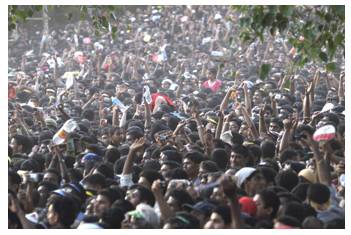
The Census in India is about many things — it must be made a priority and used to affirm a sense of comradeship.
Among the best uses of a census anywhere in the world was perhaps what happened in the United States when, in 1850 and 1860, anti-slavery campaigners used numbers from two consecutive national censuses to build support for the abolition of slavery. They showed the number of enslaved people in the U.S. to be rising — contrary to arguments made by pro-slavery politicians. There have been numerous instances of such revelations using the census.
A case of the missing census
India’s first Census was held in 1872, conducted non-synchronously in different parts of the country. After that, India has held its decadal censuses regularly from 1881 to 2011, despite diseases, world wars, Partition and other instances of turmoil. Citing COVID-19 as an excuse for its postponement now runs thin, as the Government thought it fit to allow large election rallies in the middle of a deadly second wave of the pandemic, that was criminally mismanaged. But there is no tradition of anyone being answerable and explaining why the largest democracy, once held in awe for its ability to make its people count regularly, is not doing so now. As there is no official reassurance that India will not skip its decadal Census, we can declare that we have a case of the missing census.
The best of sample surveys find it impossible to beat a census. It carries the promise of counting each and every Indian. The Government could junk, for the first time, a survey recording falling consumption expenditures in 2017-18, and get away with it. A census is when the state connects to every individual and it will find it hard to hide or duck from the data. Finding out age, gender, economic status, religion and languages spoken yields information of another order, making it a treasure trove of findings and providing pathways for planning and resolving problems, and fixing deficiencies.
Censuses in India — well before the term Big Data became commonplace — have provided great amounts of reliable numbers over time. They enable neat, inter-temporal comparability to where India stands vis-à-vis its own record. Important metrics such as the sharp decline in the gender ratio in India between the Censuses of 1961 and 1971 alerted Indians to how pre and post-natal factors were reflecting the ‘son bias’ and leading people to murder girls, born and unborn.
Some unfounded ideas, flowing from bigotry and prejudice, have been slayed by Census headcounts. Consider the data-free assertion that India is heading for a population explosion due to Muslim reproductive rates. This has been systematically taken down due to census data. The Census established that the Total Fertility Rate (TFR) is coming down at a very rapid pace and is well on its way to stabilisation. The fall in TFR among Muslims is faster than in any community. The differences in TFR across India have more to do with region and socio-economic indicators, and not religion or caste. The 2011 Census also dispelled the notion of divorce rate differentials between city and rural India. The urban divorce rate (0.89%) is almost equal to the rural rate (0.82%).
Contentious issues
Well before the novel coronavirus pandemic, the Census was entangled in a battle when thousands took to the streets and bitter protests broke out. The turning of the Census into a gateway for a nation-wide, contentious National Register of Citizens (NRC), with the names of ‘genuine citizens’ of India made a headcount issue to be one of attempting to revisit who was an Indian and who was not. The Census, if conducted along with the preparation of a National Population Register, a register of all the usual residents which includes citizens and non-citizens, suddenly began to be seen “as the first step towards [the] creation of [a] National Register of Indian Citizens (NRIC) by verifying the citizenship status of every usual resident” — this is exactly what the Union government said in an official release on November 26, 2014. Along with large sections of the citizenry insecure about their ability to provide the right paperwork, several State Assemblies issued resolutions that they would not conduct a census loaded with questions not asked before. The experience of the NRC in Assam severely damaged trust in the Bharatiya Janata Party (BJP) nationwide. Despite its completion, the NRC has been deemed by the BJP as not being the ‘right’ list. That it would be a bad faith exercise till some idea of a right list is eventually arrived at is a valid concern.
The BJP has been wary of assertive demands for a caste census. The Census has often been key to the formation and affirmation of identities over time. But there is now official squeamishness about recording identities that want to be counted and identified. India had its last caste census in 1931. In 2011, after the last general census, a socio-economic and caste census was conducted. But while other data were finalised and published, it conveniently excluded the caste data citing several reasons. It is clear that the disparity between caste groups and the privileges they enjoy versus their numbers in the population may be so stark that it may upend the BJP’s Hindutva applecart which talks of adjustment but wants a complete abandonment of the social justice plank.
Relentless data gathering
The Democratic Republic of the Congo completed the second census in its history this year, the previous census having taken place in 1984. The ability to hold a census peacefully, and not coercively, has been the hallmark of a civilised state and state of affairs. It would speak volumes if India were to join the ranks of some other countries which have been without a census since 1990; they include Afghanistan (1979), Lebanon (1932), Somalia (1985), Uzbekistan (1989), and the Western Sahara (1970). Pakistan took nearly 20 years to conduct a census after the one in 1998. It managed one in 2017. The gap spoke of its dysfunction and inabilities, and also of no desire to hear the truth that the facts thrown up would convey.
The census is vital and precious as it is a repository of complete data about the country which is gathered openly, voluntarily, and with the use of public money, making it a social good. It is not as if the Government of India does not want data. Even as it has made the future of the Census a state secret, its drive to gather and vacuum the data of its citizens for its own purposes has been on and without a framework of rules and rights to govern the process of sucking up citizen data.
A law now allows electoral rolls to be linked with Aadhaar. It may not be compulsory but it potentially allows very sensitive data of citizens to be available to the state. The drive to gather data has been relentless. The Ministry of Home Affairs has just notified the Criminal Procedure (Identification) Rules, 2022, even as two High courts are hearing the challenge to the Act. Controversial, these rules outline the procedure for taking of body measurements (it enables enforcement agencies to collect biological samples, retina scan, biometrics and behavioural attributes of convicted, arrested or detained persons). This data hunger sits in perfect contrast to events surrounding the Personal Data Protection Bill 2019. The right to privacy was declared a fundamental right by the Supreme Court of India in 2017. But, ironically, the fifth anniversary of this landmark ruling was marked more by delays to a data protection law for citizens, as the draft Bill was abruptly withdrawn. That too, after hours of deliberation and suggestions for 81 changes. All in all, the missing Census is accompanied by extensive desire to mine the data of citizens, not in a way that offers them any benefits or security, but just goes onto make their relationship with the government more asymmetrical.
The Census is about many things. But, fundamentally, it is a way in which the state, by knocking at all doors, displays its desire to connect with the people who ultimately comprise the nation. It is no wonder that Vikram Seth’s classic, A Suitable Boy, set in 1951, makes space for the census enumerator. It must be made a priority and used to affirm a sense of comradeship. A census is not about counting sheep and the Government cannot be allowed to sleep at the wheel.
Seema Chishti is a journalist-writer based in New Delhi.



